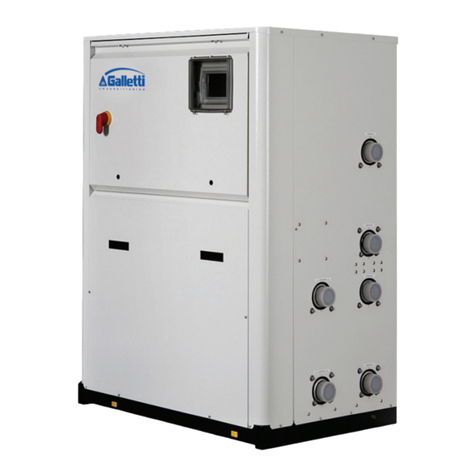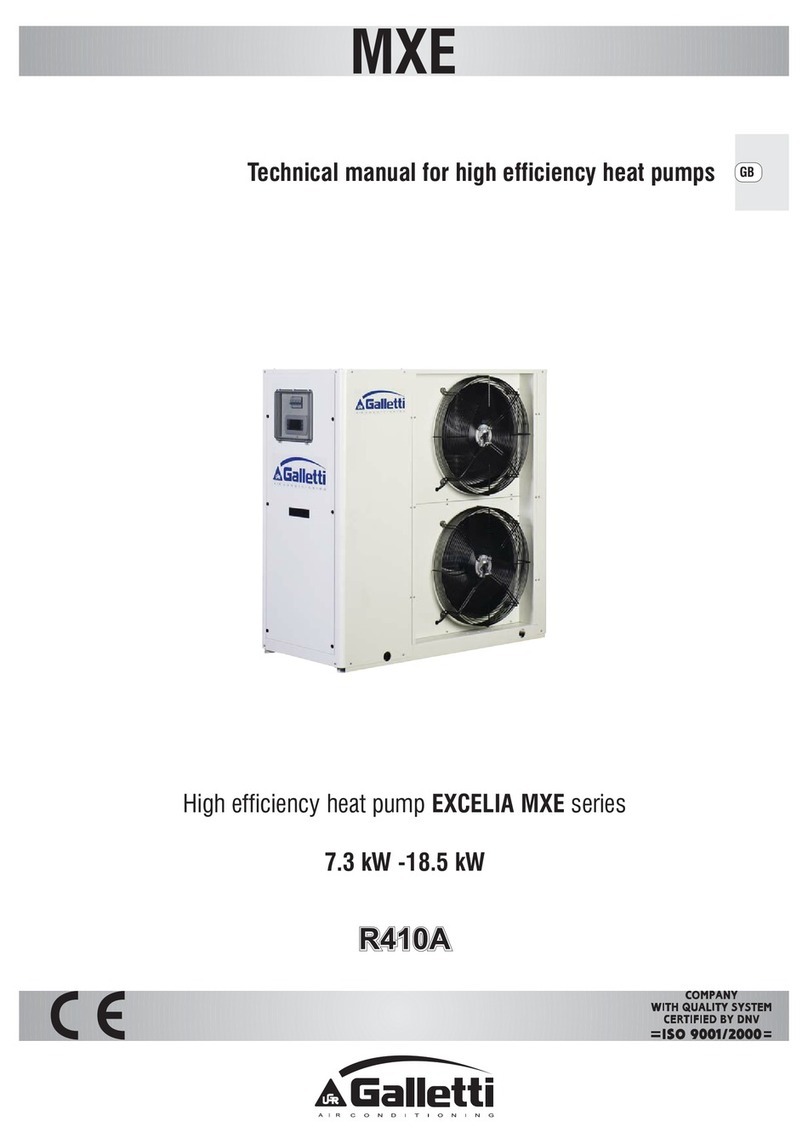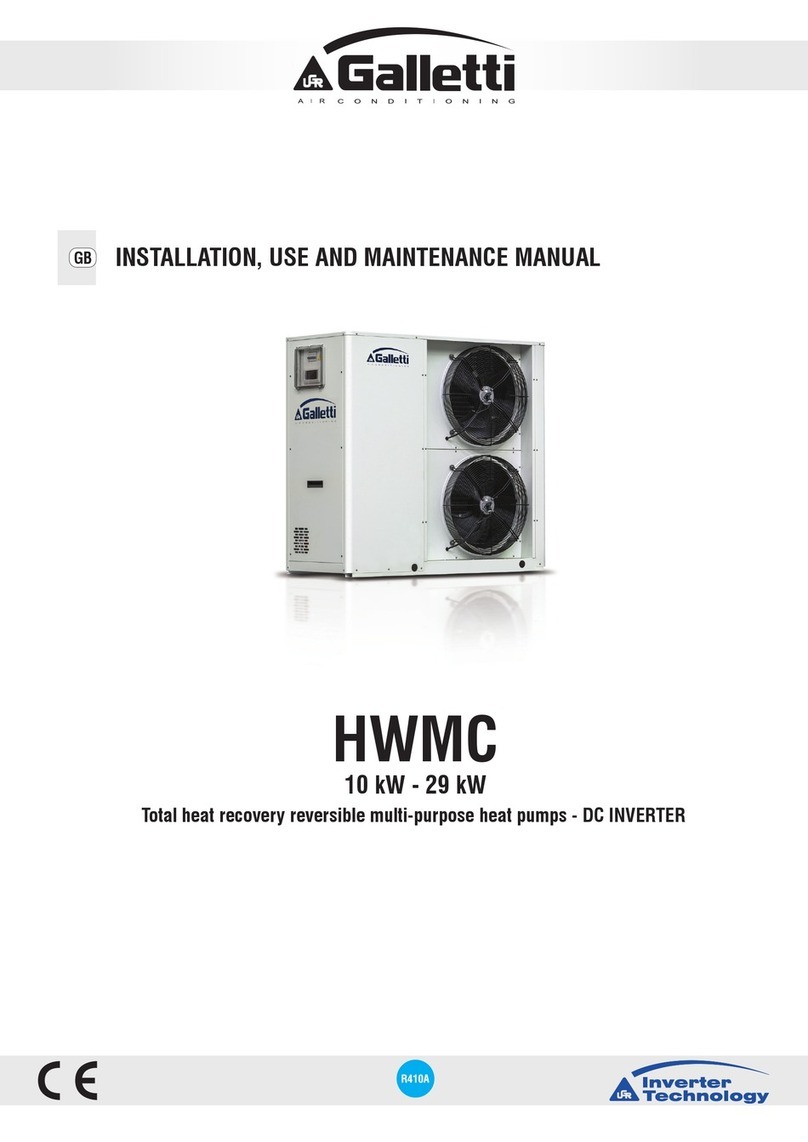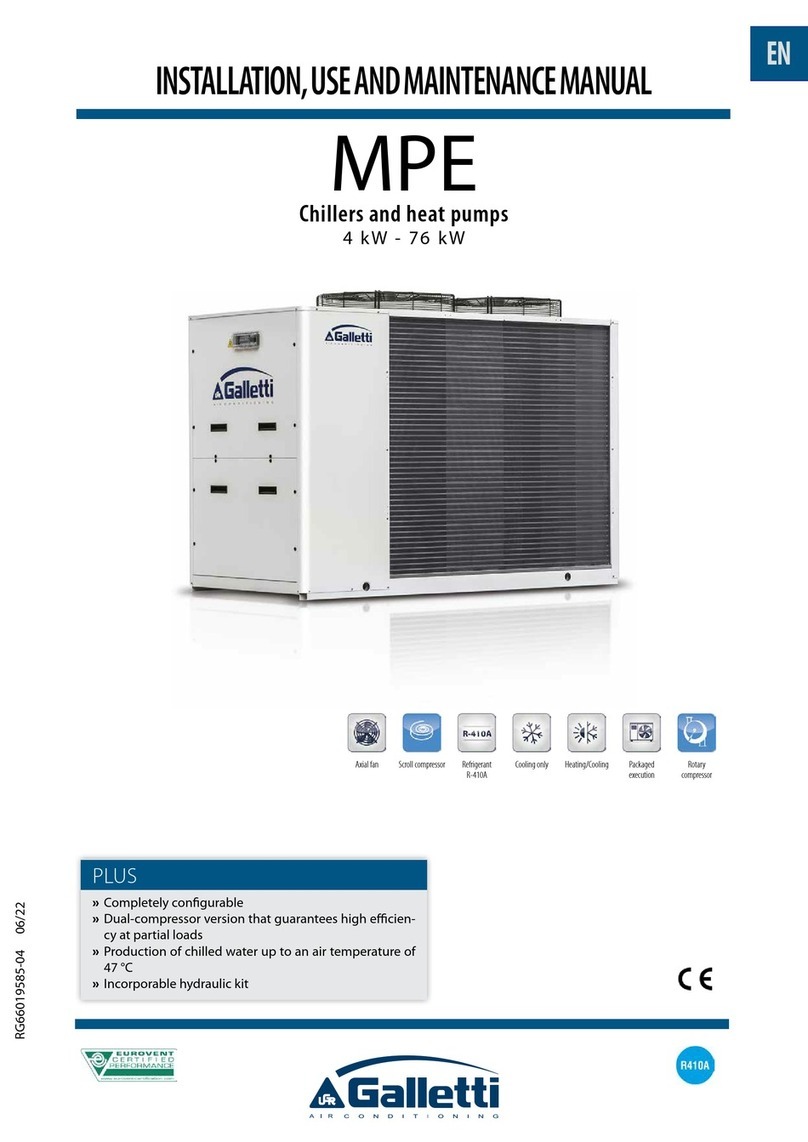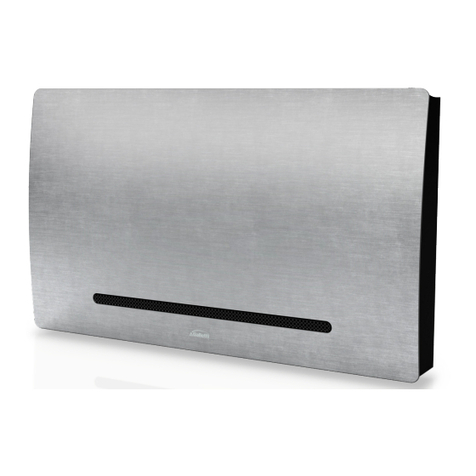
LEP
Page 7 of 28
RG66007652– Rev.01
Compressors: only prime international brand Scroll compressors are used on the LEP units.
The Scroll compressor is the best solution today in terms of reliability and efficiency in the
range of power outputs up to 182 kW for each circuit and the best solution in terms of emitted
sound output. N.B.: Scroll compressors, just like all air-tight compressors, are classified as
pressure recipients in compliance with PED for that which regards the low pressure section to
which the PS indicated on the data plate refers.
Heat exchangers: only brazed plate heat exchangers are used, made of austenitic stainless
steel AISI 304 with AISI 304 L connections, featured by a reduced carbon content to simplify
brazing operations. The solution of the brazed plate heat exchanger represents the state-of-
the-art in terms of thermal exchange efficiency and allows a strong reduction of refrigerant
load compared to standard solutions. The high degree of turbulence induced by the internal
corrugation of the plates together with their perfect smoothing features, makes it difficult for
filth to deposit or for limestone to build up on the condenser side. N.B.: due to thermal
insulation, the data plate in compliance with 97/23 PED is not legible, but the serial number of
the heat exchanger and the declaration of conformity are detected during production and are
an integral part of the HiRef archive.
Chiller components:
oMolecular and alumina sieve filter dryer activated
oSight glass with humidity indicator. The key is directly on the sight glass.
oMechanical thermostatic valve + external equalisation and built-in MOP function
oElectric thermostatic valve with step motor and specific electronic driver for the
maximum efficiency of the cooling circuit and to optimise operating parameters.
oCycle inversion valve (only heat pumps)
oOne-way valves (only heat pump)
oHigh and low pressure switches
oSchrader valves for control, access and/or maintenance
oRefrigerant-side safety valve
Electrical control board: the electrical control board is implemented and wired in compliance
with the directives EEC 73/23 and EEC 89/336 and to related standards. The board can be
accessed through the small door after having activated the main switch. All the remote
controls are implemented with signals at 24 V, powered by an isolation transformer positioned
inside the control board. A T control kit composed of thermostat and auxiliary fan is available
on demand. The unit is rated IP 43. N.B.: the mechanical safety devices such as the high
pressure switch have characteristic direct intervention and any microprocessor control circuit
failure cannot affect its efficiency in compliance with 97/23 PED.
Control microprocessor: the microprocessor on-board the unit controls the various operating
parameters by means of a keyboard set-up on the electrical control board:
oCompressor connection/disconnection to maintain the set-point of the chiller inlet
water T;
oAlarm management
High/ low pressure
Antifreeze
Flow switch
Pump alarm
oAlarm signals
oDisplay of operation parameters
oAntifreeze protection of evaporator
oControl of maximum number of compressor starts
oSerial output control (optional) RS232, RS485
oIncorrect sequence phases [not viewed on µP, but keeps compressor from starting]
[ref. Microprocessor control manual for further details]



















